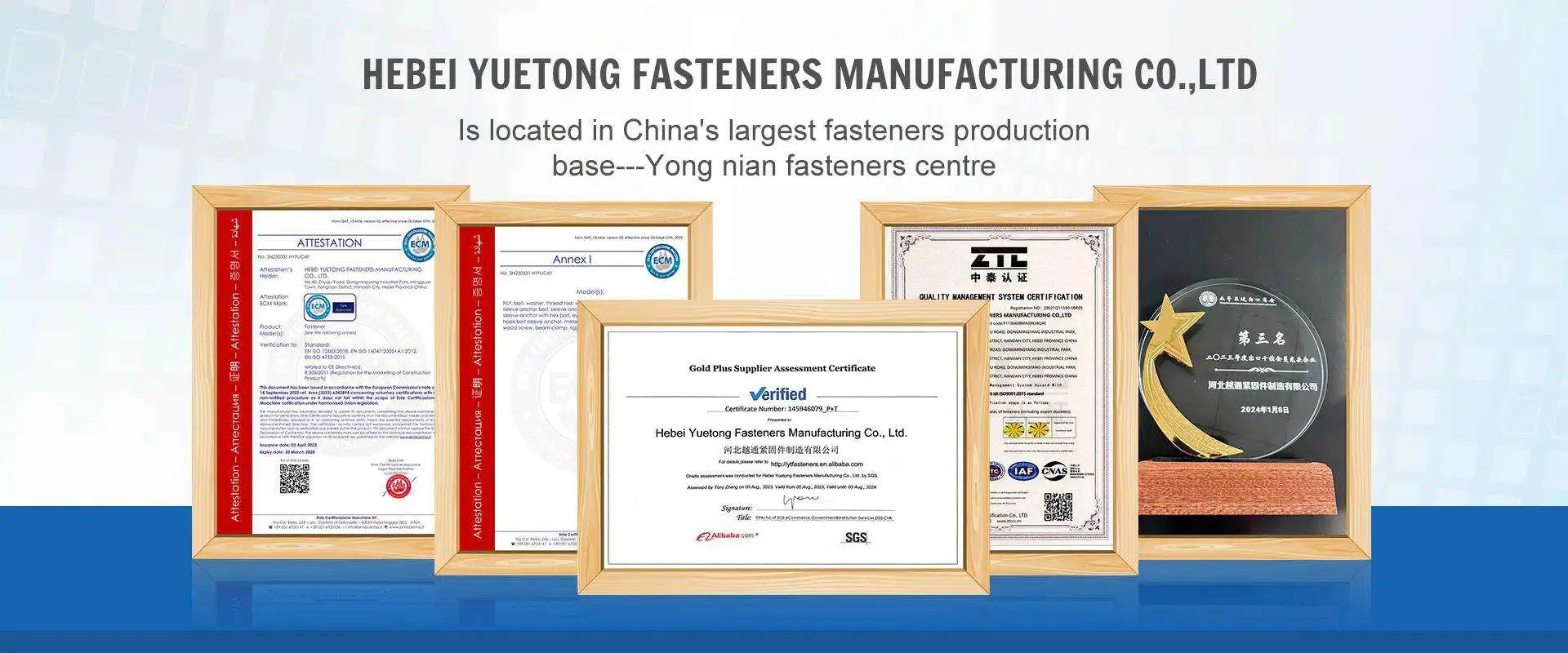नवम्बर . 18, 2024 13:41 Back to list
Specifications for Flat Washers and Their Applications in Various Industries
Understanding Flat Washer Specifications A Comprehensive Guide
Flat washers are essential components in various mechanical applications, serving as spacers, load distributors, and isolators. Understanding their specifications is crucial for selecting the right washer for your needs. This article delves into the fundamental aspects of flat washer specifications, focusing on materials, dimensions, and performance characteristics.
Materials
Flat washers are manufactured from a variety of materials, each offering different characteristics suited for specific applications. Common materials include
1. Steel Often used for its strength and durability, steel washers can be coated (zinc or chrome plating) to enhance corrosion resistance. 2. Stainless Steel This material is ideal for applications requiring resistance to rust and corrosion, making it perfect for outdoor and marine environments. 3. Plastic Used in applications where non-conductivity is essential, plastic washers can also provide cushioning and vibration dampening. 4. Rubber These washers are ideal for applications requiring flexibility and shock absorption.
When choosing a material, consider factors such as environmental exposure, load requirements, and the presence of chemicals that may affect the washer's integrity.
Dimensions
Flat washer specifications include a range of dimensions, typically standardized to ensure compatibility with various fasteners
. Key dimensions includeflat washer specs

1. Inner Diameter (ID) The ID dictates the hole size that will accommodate the bolt or screw. It’s crucial to match this to your fastener for optimal performance. 2. Outer Diameter (OD) The OD affects how much surface area the washer covers, which plays a role in load distribution and preventing surface damage. 3. Thickness Thicker washers can provide greater load distribution but may be unnecessary for lighter applications.
It is common for flat washers to adhere to industry standards such as ANSI or ISO, which specify dimensions for different washer types.
Performance Characteristics
Apart from dimensional and material specifications, the performance characteristics of flat washers should also be considered. Some key characteristics include
1. Load Capacity Each washer is rated for maximum load; exceeding this can lead to failure. 2. Temperature Resistance High-temperature environments may require specialized materials such as high-temperature plastics or metals. 3. Corrosion Resistance Consider the environment in which the washer will be used. For high-humidity areas, stainless steel or coated options may be more effective. 4. Compressibility Some applications may require washers that can compress under load, providing a more secure hold.
Conclusion
In summary, understanding flat washer specifications is critical for ensuring you select the appropriate washer for your application. By considering materials, dimensions, and performance characteristics, you can improve the reliability and longevity of your mechanical assemblies. When in doubt, consult with manufacturers’ specifications or industry standards to make informed choices that enhance your projects' success.


